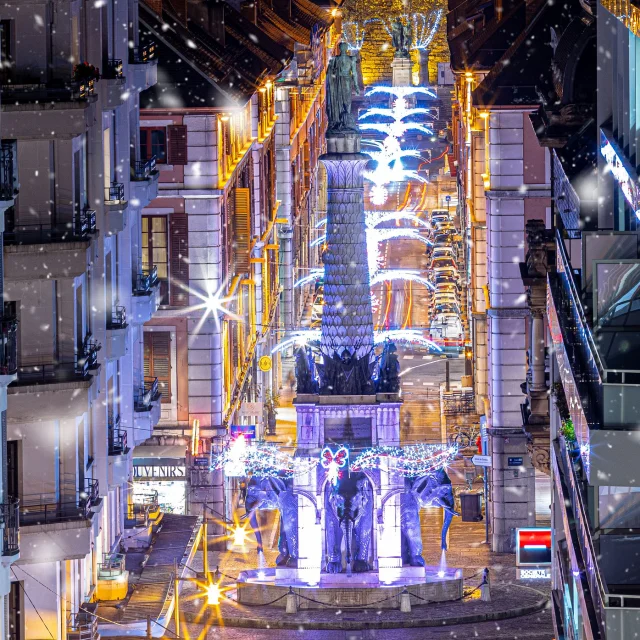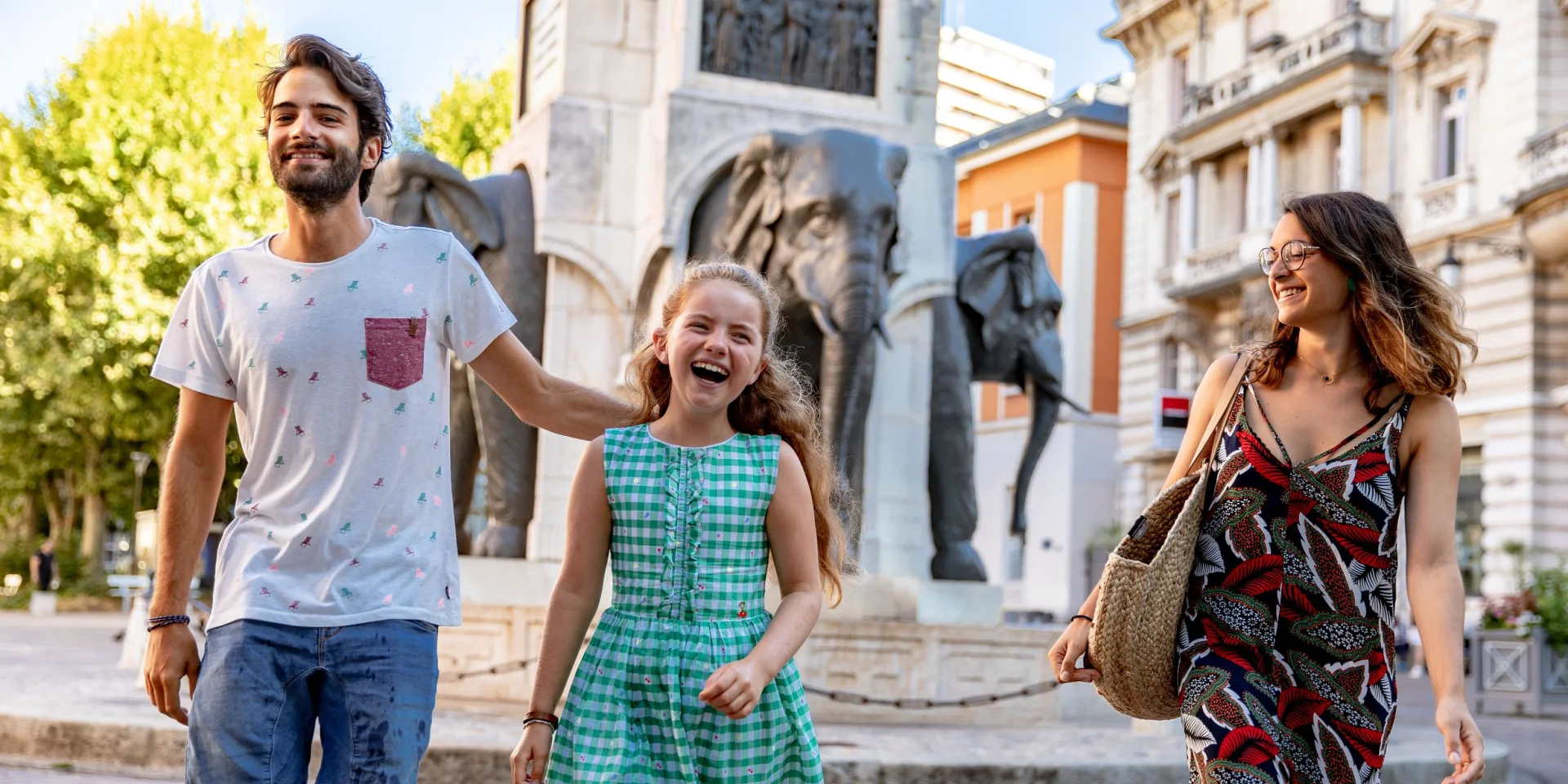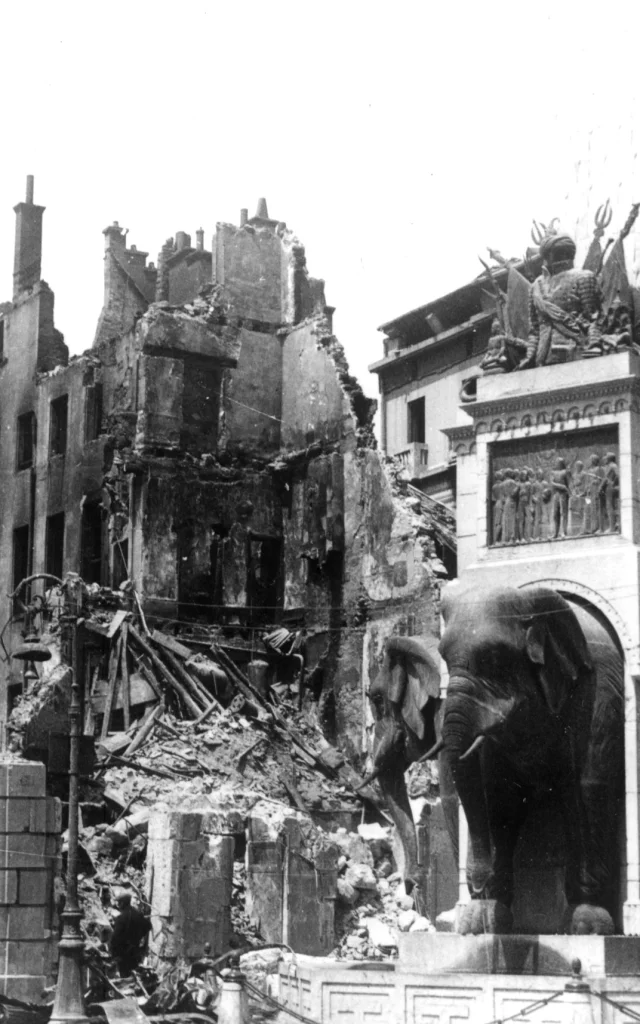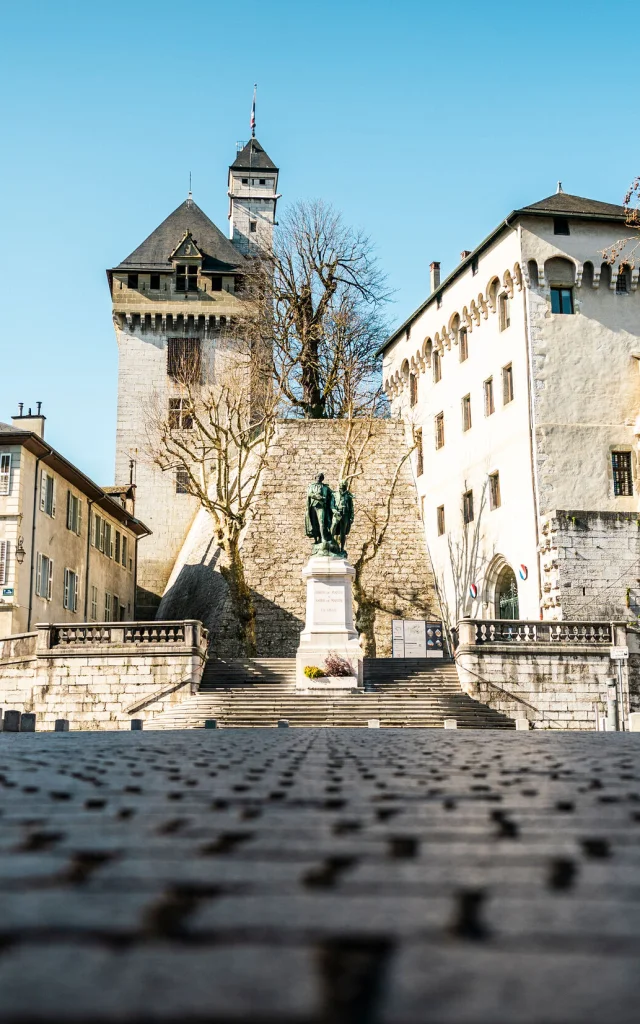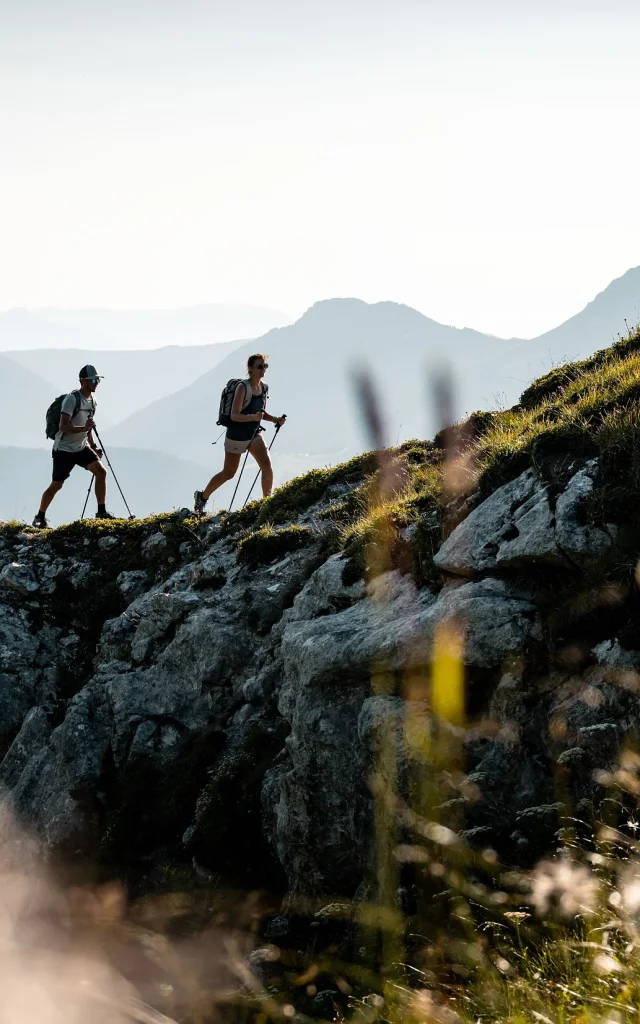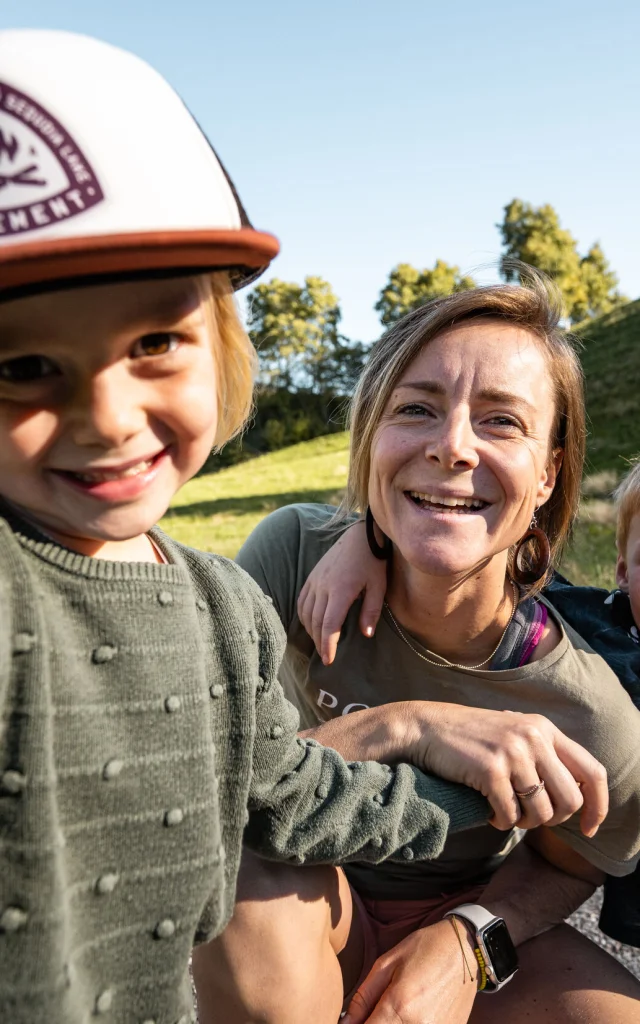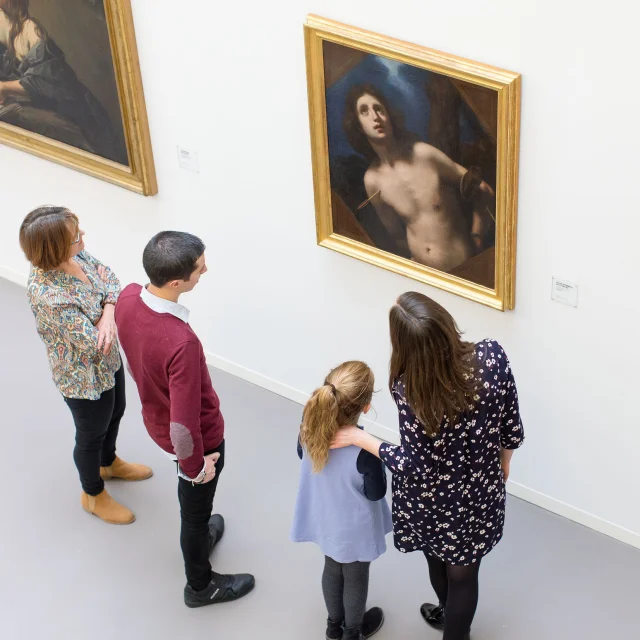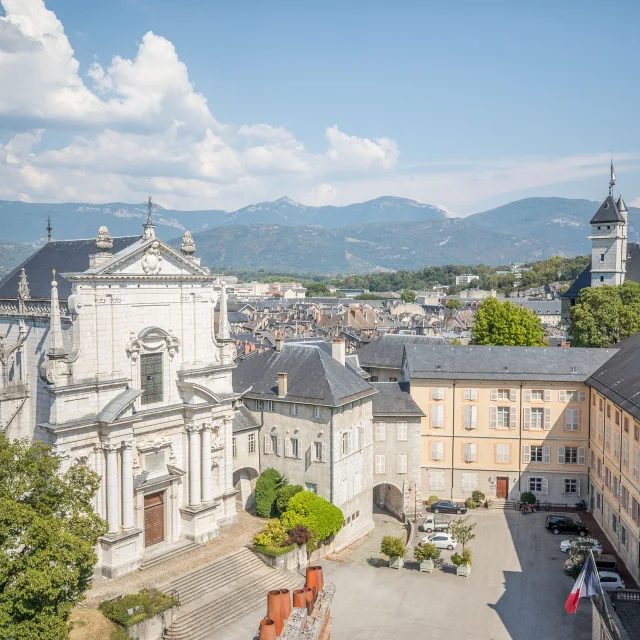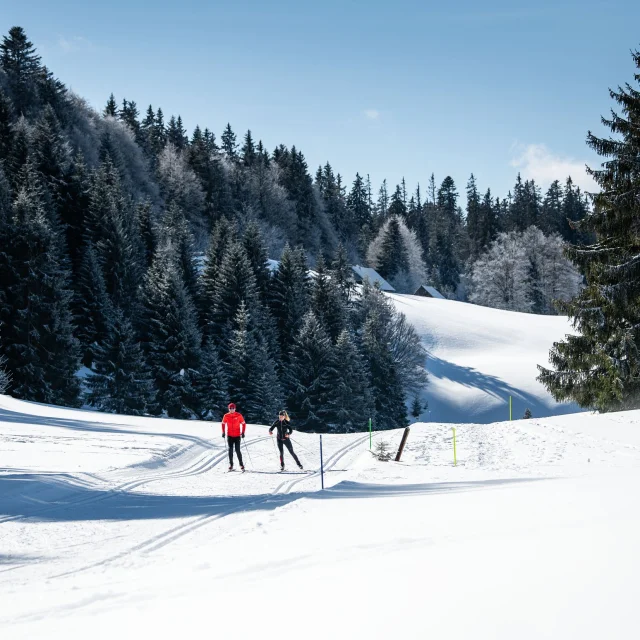The Elephant Fountain
This fountain is an eye-catching and fascinating monument, almost 18 metres high, for anyone visiting Chambéry… In the Place des Elephants, 4 pachyderms, joined at the rump, pour water into an octagonal basin… Each of them bears a fighting tower topped with a bas-relief or an inscription… A tall column resembling a palm tree trunk crowns the ensemble. At the top is a statue of a man dressed as a lieutenant-general of the King of Sardinia, holding what appears to be a document in his right hand and an oriental sword in the other… This man? He is the Count of Boigne, a great benefactor of Chambéry… Despite appearances, there is no link between the elephants of Chambéry and Hannibal….
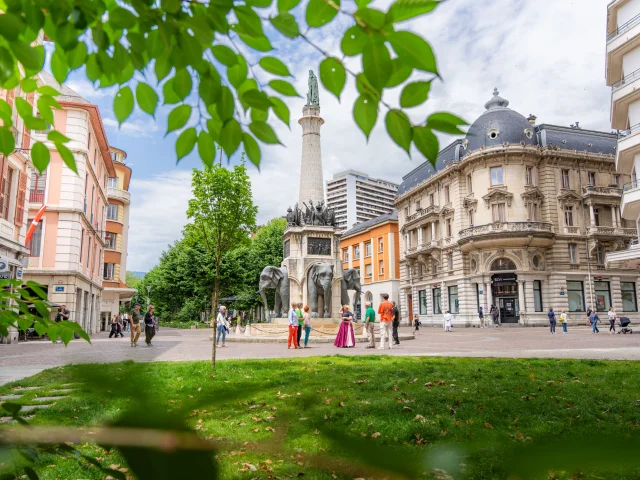
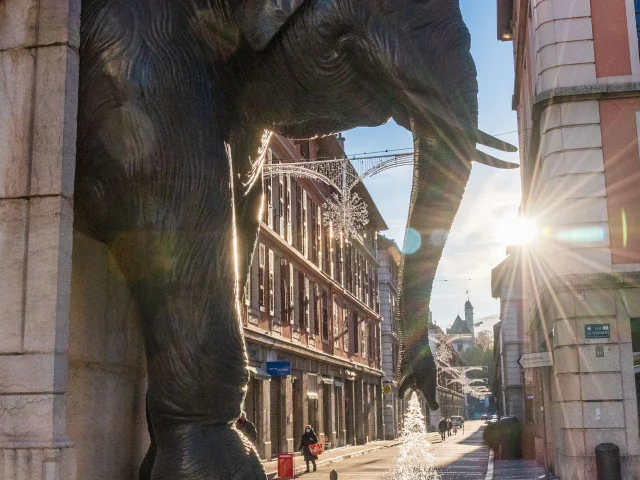
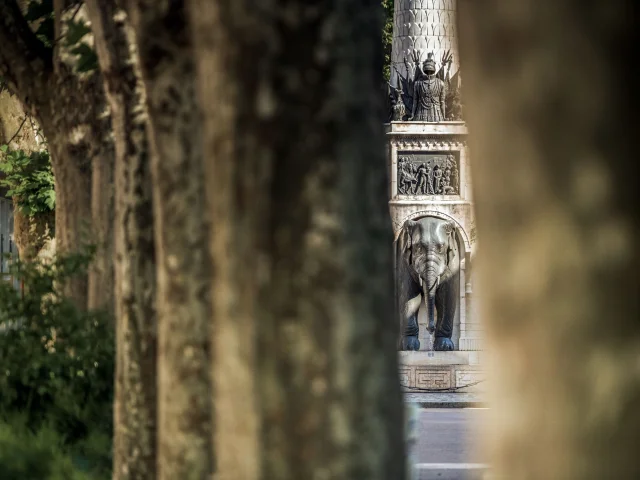
The Sasson
Erected in 1892 to celebrate the centenary of Savoie’s first attachment to revolutionary France, the statue of La Sasson stands proudly in Place du Centenaire. Her name, which means “robust woman” in Savoyard, matches her appearance: a female figure clutching the French flag to her heart.
But her destiny was an eventful one. In 1942, requisitioned like so many other bronze monuments to be cast in Germany, it was unbolted and sent to Hamburg, decapitated to fit into a railway carriage. The empty plinth then became a place of resistance: flowers were laid there, people gathered, and on 14 July 1942, more than 3,000 people from Chambéry sang La Marseillaise and the Chant des Allobroges, broadcast that very evening by Radio Londres.
Found after the war, his mutilated body was forgotten for a long time in municipal repositories. It was only in 1982, thanks to the discovery of a cast of his head and the efforts of the Friends of Old Chambéry, that the statue was brought back to life and returned to its original position.
Over time, the Sasson has become an emblem of Savoie, of memory and of freedom, a reminder that a monument can survive history, suffer oppression and be reborn as a symbol of collective hope.
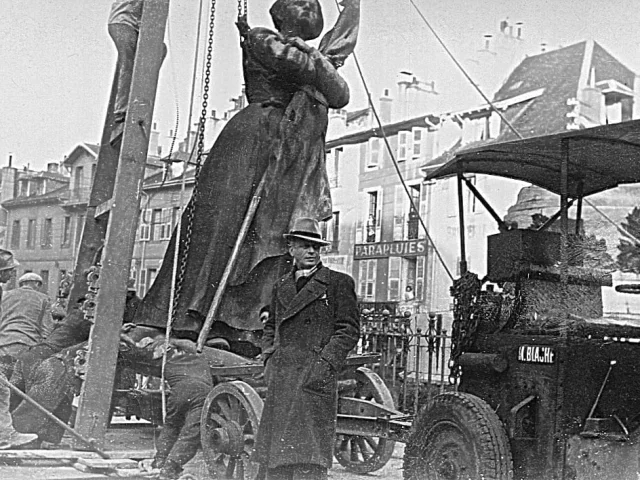 480141153 2629375610597394 8592122853603737401 N
480141153 2629375610597394 8592122853603737401 N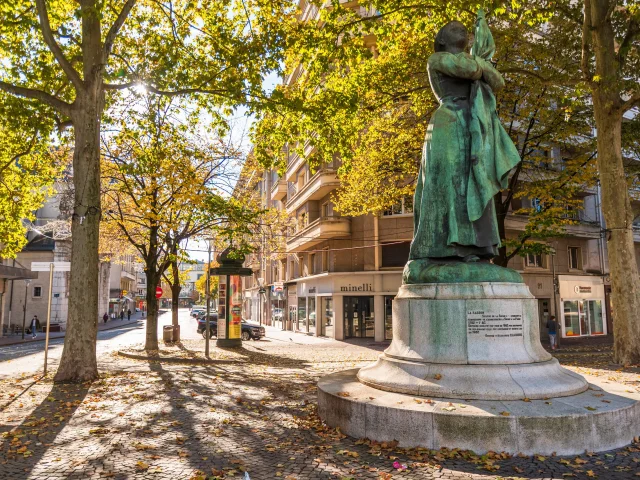
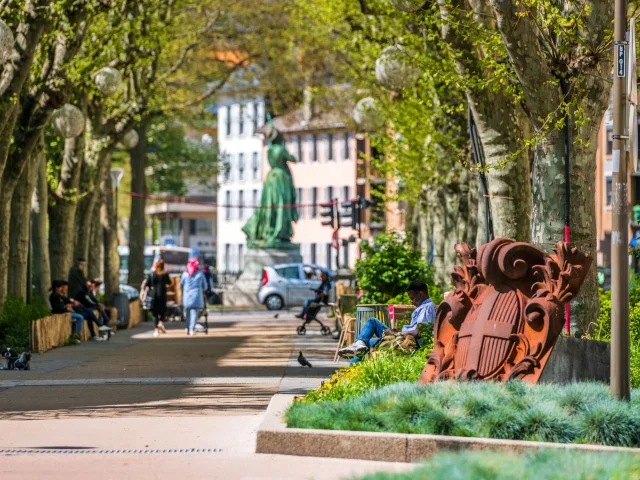
Chambéry'CimesYou might also like to listen to...
Chambéry’Cimes
is a podcast
Chambéry Montagnes
Sound recording, editing, mixing and production: Kamel Bouziane, Art AbordSavoie.
Melodies by Skal.
In this episode, we explore Chambéry in the company of Chantal George, historical monuments guide, Jacques Viout, vice-president of the Société des Amis du Vieux Chambéry and Julie Chavaribeyre from the tourist office.
